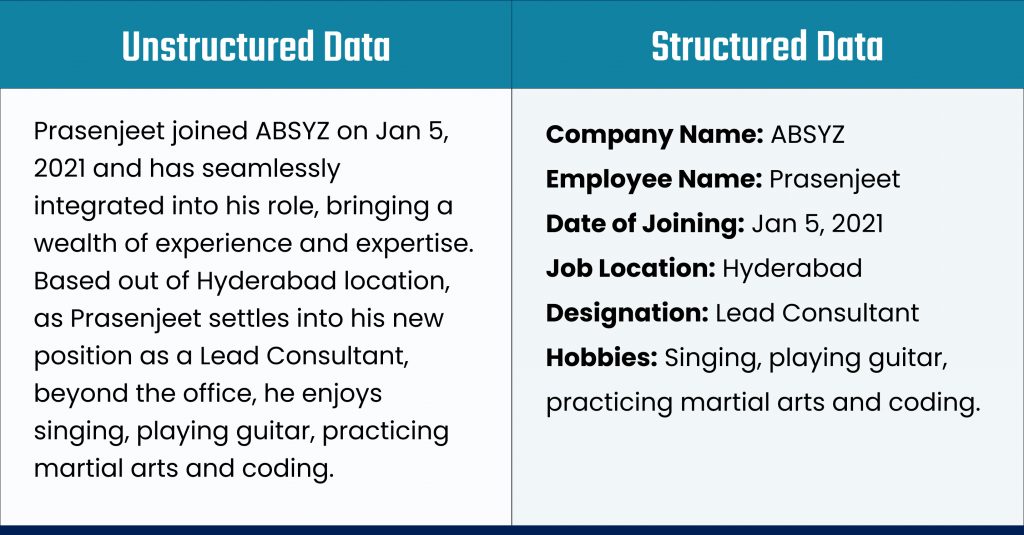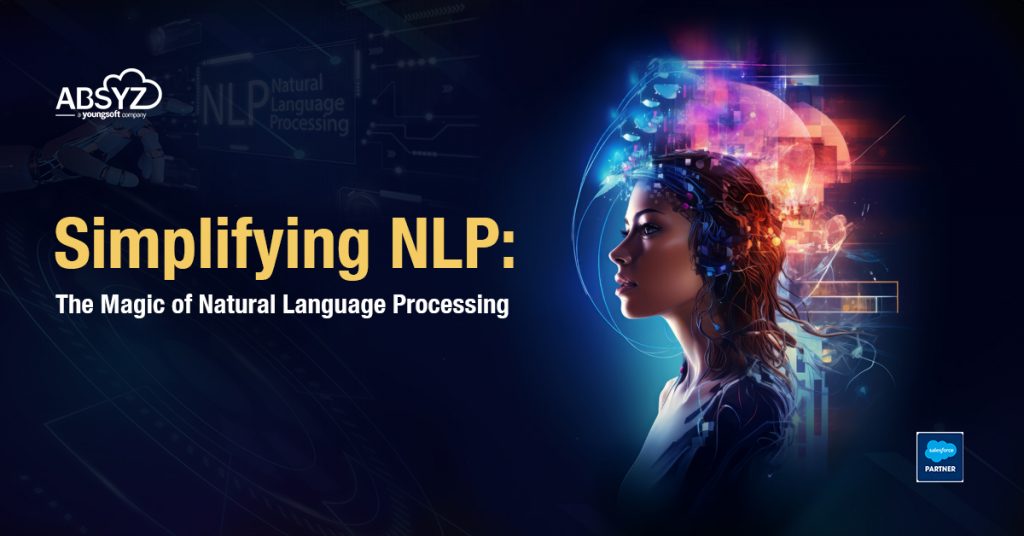Overview:
It has always been a subject of wonder how artificial intelligence (AI) allows computers to understand and produce natural human-like responses. It is evident that some people are curious about what goes on behind the scenes even though they may not have a strong background in computer science. The goal of this blog is to explain the core concepts of NLP and how it functions, at a high level.
What is Natural Language Processing?
Natural Language Processing (NLP) is a branch of artificial intelligence (AI) that merges computer science with linguistics, enabling computers to understand, interpret, and produce human language in a way that is beneficial to humans.
How does NLP help in the field of AI?
NLP facilitates various practical tasks such as understanding meaning of a sentence, identifying key information in a text, language translation, question answering, text summarization, and generating human-like responses. Grammarly, Plagiarism Checker, ChatGPT are few of the examples where NLP is used.
What is Natural language anyway?

Image Source: Leonardo.Ai
Natural language is the words and sentences that people use to communicate with one another, whether they are reading, writing, or listening. Although different AI models may handle multiple languages, we will concentrate on natural language processing (NLP) in the English language.
Unstructured and Structured Data:
Two important terms in the field of AI are “structured” and “unstructured” data. Unstructured data is the language we speak, a language that is only understood by humans. Structured data is information that has been organized so that a computer can comprehend it, similar to what we find in a database.
Here is an example of the transformation of unstructured data into structured data.

How does NLP work?
We have been waiting for this. Right? NLP is divided into two subfields, which we must know in order to comprehend how NLP functions. They are Natural Language Understanding (NLU) and Natural Language Generation (NGU). What’s the difference between them? Let’s do it the old school way.

Most of the AI apps we interact with use deep learning or neural networks to complete tasks end-to-end, even if NLU and NLG are still essential to NLP today. For example, without explicitly constructing an intermediary structure, a neural machine translation system may translate a sentence from, say, French into English. By identifying patterns, words, and phrases, neural networks enable faster and more contextually correct language processing. We will talk about Neural Networks some other day.
NLP uses different algorithms, including rule-based systems, machine learning, deep learning, and large language models, to analyze text. This is called parsing which involves two steps. Syntactic parsing, which breaks down the text into smaller parts to determine their underlying grammatical structure and Semantic parsing, which extracts meaning from text. Different models or algorithms are used, depending on the desired result. A translation app’s parsing method will differ from that of a voice assistant like Siri.
NLP in Action:

Let’s use a sentence to see how NLP works.
Karate originated in Japan, which means empty hand.
1) Segmentation:
Larger texts are divided into smaller ones at the punctuation marks or end of sentences.
|
Karate originated in Japan, which means empty hand. |
|
|
Karate originated in Japan |
which means empty hand |
2) Tokenization:
Sentences are split into individual words.
Karate originated in Japan | which means empty hand | ||||||
Karate | originated | in | Japan | which | means | empty | hand |
3) Stop Words:
These are common words like “the,” “is,” “and,” etc., that are filtered out during text processing because they are considered to have little or no significance in determining the meaning of a sentence.
“Karate originated in Japan which means empty hand”
The ones highlighted in bold are examples of stop words.
4) Stemming:
Words are reduced to their root form called stem.
“Karate originated in Japan” Stem = origin
“Which means empty hand” Stem = mean
5) Lemmatization:
This is similar to stemming but arrives at a much more valid root word called lemma by taking the part of speech into account.
“Karate originated in Japan” Lemma = originate
“Which means empty hand” Lemma = mean
6) Part of Speech Tagging:
Adds labels to each word based on its part of speech, such as a verb, noun, adjective and so on.
Karate | originated | in | Japan | which | means | empty | hand |
Noun | Verb | Preposition | Proper Noun | Relative Pronoun | Verb | Adjective | Noun |
7) Named Entity Recognition:
Uses different algorithms to identify and categorize named entities mentioned in text into predefined categories such as person names, organization names, locations, dates, numerical expressions, etc.
“Karate originated in Japan”
The name of a martial art and its location have been highlighted above.
Name of Martial Arts | Origin | Meaning |
Karate | Japan | Empty Hand |
All of these algorithms for processing and learning produce structured data that is simple for computers to understand. NLG then uses this data to generate responses. In our upcoming blogs, we will go into further detail on how NLG functions.
To learn more about NLP in depth and its usages, refer the links below:
🔗 https://www.deeplearning.ai/resources/natural-language-processing/
🔗 https://aws.amazon.com/what-is/nlp/
🔗 https://en.wikipedia.org/wiki/Natural_language_processing
What is the primary goal of the tokenization step in Natural Language Processing (NLP)?
- To identify the parts of speech in a sentence
- To split the text into individual words or tokens
- To analyze the sentiment of the text
- To generate a summary of the text
Give it a thought and post your answer in the comments section.
Conclusion
We gained a very high level understanding of NLP and its connection to the English language from this blog. After the steps listed above, different algorithms and techniques are used in NLP, such as sentiment analysis, intent analysis, and context analysis, which aid in extracting insightful information from text or speech data to produce accurate understanding in a variety of NLP applications. Keep an eye out for our upcoming blogs, in which we’ll discuss the operation of large language models and neural networks.


















